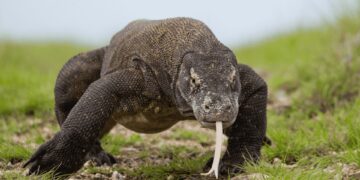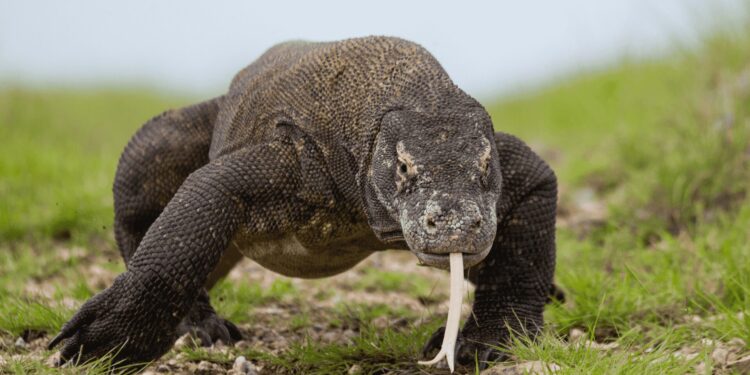Komodo dragons are fascinating and formidable creatures, known for their impressive size and unique biological traits. However, despite their allure, consuming Komodo dragon meat is highly discouraged. In this post, we’ll explore what makes these reptiles so remarkable, where they live, and why it’s crucial to protect them rather than eat them.
Chief Characteristics of Komodo Dragons
1. Size and Appearance:
- Largest Living Lizard: Komodo dragons (Varanus komodoensis) are the largest living lizards, reaching lengths of up to 10 feet (3 meters) and weighing over 150 pounds (70 kilograms).
- Robust Build: They have a strong, muscular build with a thick tail and powerful limbs.
- Rough Skin: Their skin is rough and durable, covered in small, bony scales known as osteoderms that provide protection against injuries.
2. Habitat and Distribution:
- Native Habitat: Komodo dragons are native to a few Indonesian islands, including Komodo, Rinca, Flores, Gili Motang, and Padar.
- Preferred Environment: They inhabit dry, open grasslands, savannas, and tropical forests at low elevations.

3. Diet and Hunting:
- Carnivorous Predators: Komodo dragons are carnivorous and primarily feed on large prey such as deer, pigs, and water buffalo. They also consume carrion.
- Hunting Strategy: They use a combination of stealth, power, and patience to ambush their prey. Their sharp claws and serrated teeth help them deliver powerful bites.
- Toxic Saliva: Their saliva contains a mix of toxic bacteria and venom that helps to immobilize and kill prey. A bite can cause severe infections, leading to the prey’s eventual death.

4. Reproduction:
- Egg Laying: Females lay around 20 eggs in burrows, which they guard fiercely.
- Incubation Period: The eggs incubate for about 7-8 months before hatching.
- Hatchlings: Young Komodo dragons are vulnerable to predation and spend their early years in trees to avoid being eaten by larger predators, including adult Komodo dragons.
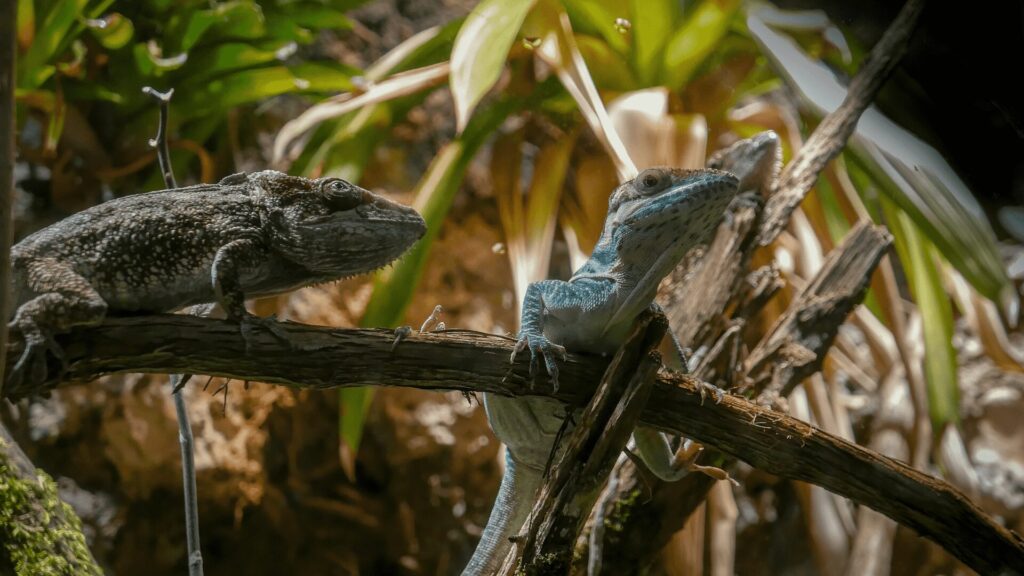
5. Behavior:
- Solitary Animals: Komodo dragons are generally solitary creatures, coming together only to mate and feed.
- Territorial: They are territorial and use physical displays, hissing, and tail whipping to ward off intruders.
- Regulating Body Temperature: They are ectothermic (cold-blooded) and rely on external sources of heat to regulate their body temperature, often basking in the sun to warm up.
6. Lifespan:
- Longevity: In the wild, Komodo dragons can live up to 30 years, while in captivity, they can live slightly longer due to regular feeding and absence of predators.
7. Unique Biological Traits:
- Keen Senses: They have excellent vision, capable of seeing up to 300 meters (985 feet), and a highly developed sense of smell, using their forked tongue to detect chemical signals in the air.
- Efficient Metabolism: Komodo dragons have a slow metabolism, allowing them to survive on fewer meals. They can consume up to 80% of their body weight in one feeding and then go for weeks without eating.
Komodo dragon attacks on humans are rare but can be fatal when they occur. Reports of Komodo dragons killing people are infrequent, and the exact number of fatalities per year is not well-documented. However, over the past few decades, there have been a handful of recorded attacks, some of which have been fatal.
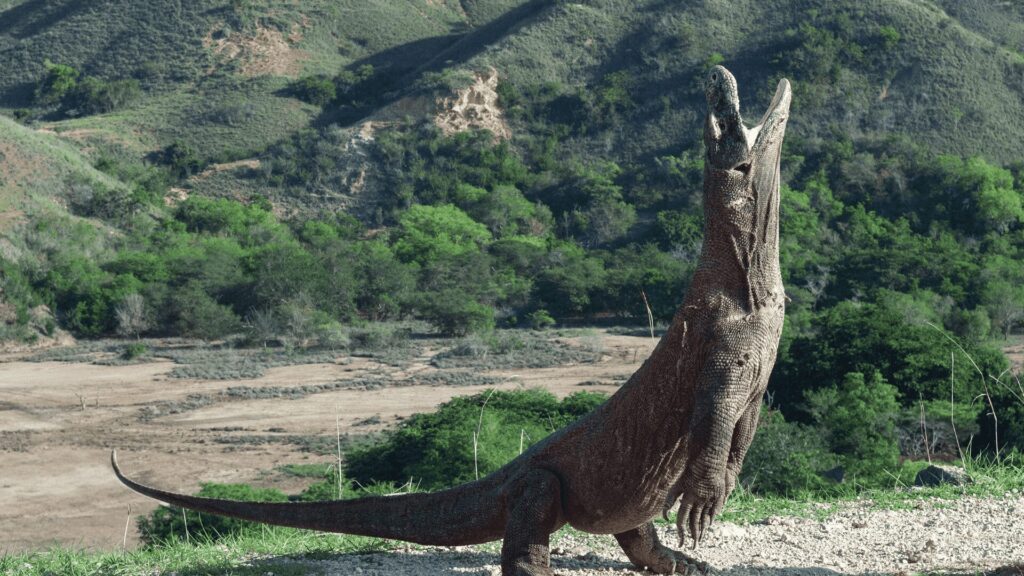
Known Incidents
- 2007: An eight-year-old boy was killed by a Komodo dragon on Komodo Island.
- 2009: A fisherman died from his injuries after being attacked by two Komodo dragons.
- 2017: A tourist was bitten while trying to photograph a Komodo dragon but survived the attack.
Estimated Frequency
- Rare Occurrence: Komodo dragon attacks are extremely rare, with only a few incidents reported over several decades. They are not known to kill humans on a regular annual basis.
Context of Attacks
- Provocation: Most attacks occur when humans provoke or approach the dragons too closely. Komodo dragons are typically not aggressive toward humans unless they feel threatened or are cornered.
- Habitat Encroachment: As human activity encroaches on their habitat, encounters between Komodo dragons and people may become more frequent, increasing the risk of attacks.
Preventive Measures
- Guided Tours: Visitors to Komodo National Park are advised to take guided tours with park rangers who are trained to handle encounters with Komodo dragons.
- Maintaining Distance: It is crucial to maintain a safe distance from these animals and to avoid behaviors that may provoke them.
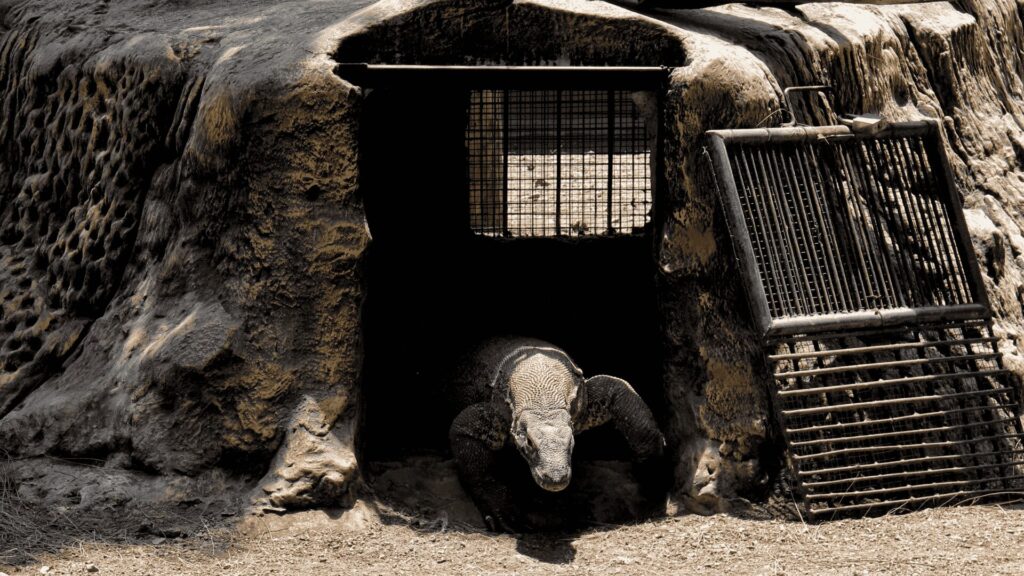
Why Komodo Dragons Shouldn’t Be Eaten
1. Conservation Status: Komodo dragons are classified as vulnerable by the International Union for Conservation of Nature (IUCN). Their limited distribution and small population make them susceptible to extinction. Hunting and consuming them directly threaten their survival and conservation efforts.
2. Legal Protection: Indonesian law and international conservation agreements protect Komodo dragons. It is illegal to hunt, kill, or consume them. Violators face severe penalties, including fines and imprisonment. These laws are critical for preserving their populations and habitats.

3. Ethical Considerations: Eating an endangered species is ethically problematic. Komodo dragons play a vital role in their ecosystem as apex predators. Their presence helps maintain the balance of their natural habitat. Consuming them undermines conservation efforts and disrupts this balance.
4. Health Risks: Komodo dragons have toxic bacteria in their saliva, which can pose significant health risks even after cooking. Unlike commonly consumed animals, their meat has not been studied extensively for human consumption, leaving unknown dangers.
Conclusion
Komodo dragons are extraordinary creatures deserving of our respect and protection. Their unique biology, limited habitat, and conservation status highlight the importance of preserving these reptiles rather than consuming them. By refraining from eating Komodo dragon meat, we contribute to their survival and support global biodiversity conservation efforts.

